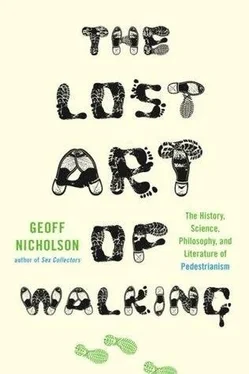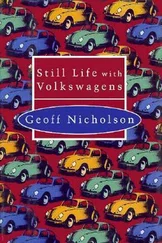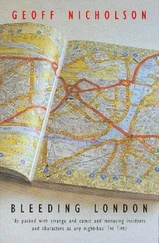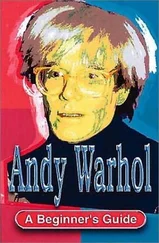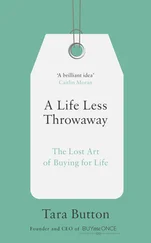Suddenly I found myself tearing up at this story of unimaginable courage set against the familiar backdrop of a grubby, everyday city. I suppose courage is to be found everywhere, and especially in cities under attack. Courage seems to be unattached to ideology, though naturally we want it to belong to the one we support. To be walking in a London street where men had taken such terrible risks was both chilling and infinitely moving. I thought I was going to weep.
Thank God I managed to hold it in. Being reduced to tears on a walking tour would really not have shown the Blitz spirit at all. We walked on, not very far and not very fast. It gradually became obvious, and it was not exactly a surprise, that two hours of standing around listening to stories, interspersed with rather short walks, of no more than a couple of hundred yards each, was actually very hard work, much harder than walking continuously for two hours. As the tour ended twenty people were rubbing their backs, complaining about their feet, and saying they needed to sit down. I checked my GPS: in those two hours we’d walked just under a mile.
♦
In the end no serious London walker allows himself to be guided around the city by anything other than his own instincts and internal compass. The real enterprise is to make the city ‘yours’ as opposed to Dickens’s or Sherlock Holmes’s or the Beatles’.
This is perhaps what that fine London walker William Blake (or at least his hero, Los) meant when he said, ‘I must Create a System, or be enslaved by another Man’s’.
To devise your own system of walking in London isn’t easy — it requires resolve and perversity. The true London walker avoids the obvious by pursuing some grand, if quixotic, agenda. He (it usually is a he) walks in search of lines of force, unrecognized symbols, secret bunkers, evidence of conspiracy, seeking the Land of Cockayne or a new Jerusalem. Personally, I blame the author Iain Sinclair for a lot of this.
Iain Sinclair is a poet, novelist, memoirist, and occasional filmmaker, who dwelled in pretty thorough obscurity until 1985 or so when Peter Ackroyd wrote a book called Hawksmoor , a trans-historical detective novel with a plot that involves the discovery of human sacrifices in the crypts of certain seventeenth-century London churches built by an architect not entirely unlike the historical Nicholas Hawksmoor, although in the novel he’s called Nicholas Dyer, and Hawksmoor is the name of a present-day detective.
Ackroyd fessed up — he’d have been a fool not to — that the novel had been partly inspired by Iain Sinclair’s Lud Heat , a prose poem that also invokes pilgrim routes, municipal gardening, and the American avant-garde filmmaker Stan Brakhage.
Ackroyd’s book was a commercial success, and although that didn’t convince throngs of people to start reading Sinclair’s work, he did become a contender, a gray eminence, a distant, brooding literary figure, and a sort of guru for London’s hipper literary walkers. His own commercial success came chiefly from writing nonfiction accounts of his walks in and around London, and although the thick, dense allusive prose of these accounts isn’t easy reading, it’s a whole lot easier than the thick, dense, allusive prose of his fiction. My favorite of his books, and the most accessible, Lights Out for the Territory , is subtitled ‘9 Excursions in the Secret History of London’.
Sinclair’s project, pretty thoroughly realized, was to connect his personal experiences of walking around the more feral parts of the city (in general the parts where the tour guides don’t take you, although Sinclair is a Jack the Ripper maven) with various overlapping historical traditions: the literary, the bohemian, the criminal, the mystical, the alchemical, not so much the sexual. He brings together the worlds of various Londoners, some living, many dead, many of them walkers, some permanent residents, some who just passed through: Daniel Defoe, William Blake, the Kray twins, Derek Raymond, William Burroughs, Alan Moore, Rachel Whiteread, to name very few. He’s also spectacularly good at revealing and connecting historical characters you wish you knew more about:
‘Thomas Canry Caulker, son of Canrah Bah Caulker, King of Bompey in West Africa — William Hone, bookseller, prosecuted for blasphemy…Samuel Sharpe, banker and Egyptologist…John Swan, originator of the steamship’s screw propeller and the self-acting chain messenger’.
The text has frequent exciting references to ‘secret mythologies’, ‘psychic landscapes’, and ‘mystical geographies’.
All this makes Sinclair a psychogeographer, though frankly, these days, who isn’t? In its modern form psychogeography (of which, more later) often seems to be a way for clever young men to mooch around cities doing nothing much, claiming that they’re flaneurs who are doing something really, you know, significant, and often taking Iain Sinclair as their role model. To be fair to Sinclair he seems amused by all this, and at the very least skeptical about the craze he’s started. He refers to psychogeography as a franchise, which seems to get it about right — it neatly turns the psychogeographer into the McFlaneur.
For anyone to compete with Sinclair on his own terms would be folly. He knows more than you do. He has read more widely, more deeply, more obscurely than you. He’s also walked more and walked farther, more often, more observantly, more obsessively. And so, not being an absolute fool, I decided it would be a good idea to have Iain Sinclair (metaphorically at least) walk on the footpath with me rather than stand beside it observing my failings. I thought I’d better talk to him. I made contact. He said walk on over, so I did. For a literary gray eminence he was remarkably welcoming.
Sinclair, as his writings regularly tell us, has lived for decades in Hackney, in the all too appropriately named Albion Drive. I’d walked past his house years earlier on one of my own walking excursions, and noted that it seemed a good deal less the dark shamanic lair than you might have expected from reading Sinclair’s books.
The only other thing I remembered from that walk was seeing a graffito at the end of the street. Painted in blue on a pale yellow brick wall were the words No lips . I took a photograph of it, and over the years I’ve regularly looked at it and wondered what, if anything, those words meant.
Photographing graffiti is a suitably Sinclairian thing to do. One of the essays in Lights Out for the Territory has him walking from Hackney to Greenwich Hill and back to Chingford Mount, recording all the graffiti he sees on the way. ‘These botched runes’, he writes:
‘burnt into the script in the heat of creation, offer an alternative reading — a subterranean, preconscious text capable of divination and prophecy. A sorcerer’s grimoire that would function as a curse or a blessing.’
When I went back to Hackney this time, on my way to see Sinclair, I walked around trying to find the No lips graffito again, but either it had been removed or I was looking in the wrong place. So I looked for other clues instead. Sinclair the writer is so preternaturally aware of his surroundings and their real, imagined, or clandestine histories and meanings that just going to see him is enough to put you on your sensory mettle. Not far from Albion Drive, for instance, was a street called Vixen Mews; surely that was a name that bespoke a dark past and a labyrinthine narrative. Later Iain Sinclair would tell me he had no idea where the name came from, though he was intrigued by it, too, and I admit I was relieved to find that his knowledge of London wasn’t utterly encyclopedic.
On the other hand, when I mentioned that the previous day I’d been wandering around London and had found myself walking through the Nonconformist graveyard known as Bunhill Fields (where quite a few people go at lunchtime to eat their sandwiches, I discovered), his eyes lit up like Roman candles.
Читать дальше
